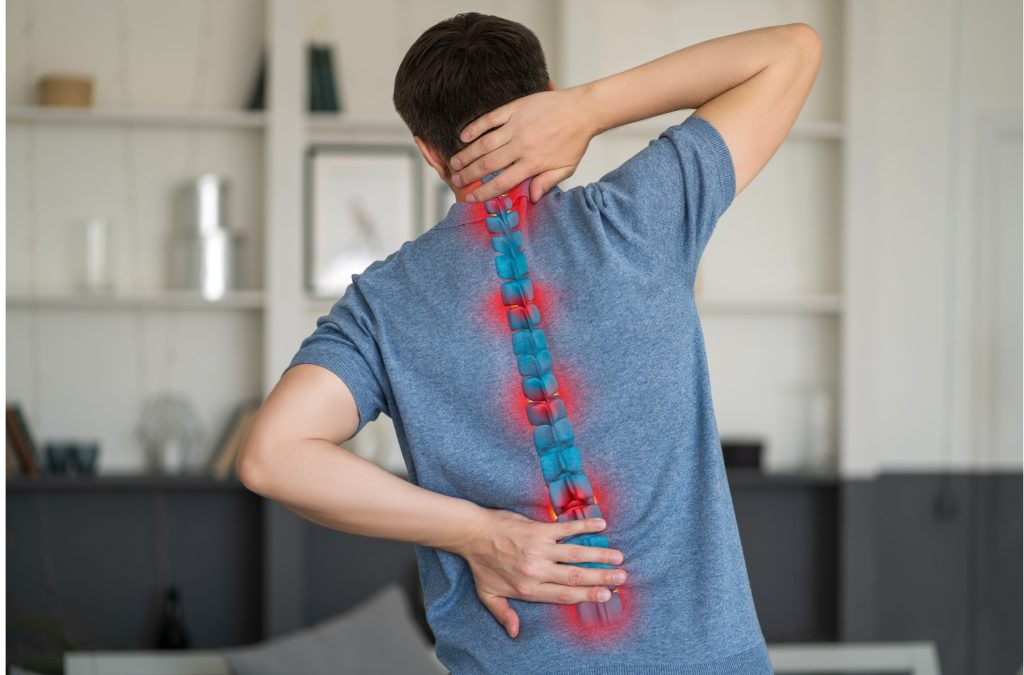The narrowing of the spinal canal, compressing the nerves traveling through the lower back into the legs. While it may affect younger patients, due to developmental causes, it is more often a degenerative condition that affects people who are typically age 60 and older.
Narrowing of the spinal canal usually occurs slowly, over many years or decades. The disks become less spongy with aging, resulting in loss of disk height, and may cause bulging of the hardened disk into the spinal canal. Bone spurs may also occur and ligaments may thicken. All of these can contribute to narrowing of the central canal and may or may not produce symptoms.

CAUSES
Spinal stenosis occurs when bulging discs, arthritic spurs, and thickened tissues combine to “compress” the nerves traveling through the spinal canal.
SYMPTOMSÂ
- Numbness or tingling in a foot or leg.
- Weakness in a foot or leg.
- Pain or cramping in one or both legs when you stand for long periods of time or when you walk, which usually eases when you bend forward or sit.
- Back pain.
DIAGNOSIS
Diagnosis is made by a neurosurgeon based on history, symptoms, physical examination and test results. Imaging studies used may include the following:
- X-ray
- CT scan
- MRI
TREATMENT OPTIONS
Conservative treatments
A combination of time, medications, posture management, stretching and exercise can be helpful to many patients for pain flare-ups. Weight management, nicotine cessation and bone-strengthening endeavors may also be indicated.
Minimally invasive lumbar decompression (MILD) It uses a special tool that glides through a very small portal between the bones. Guided by an X-ray and contrast that is injected during the procedure, the surgeon scrapes out the ligament and widens the spinal canal to reduce nerve roots compression.
Open spine surgery
The goal of spinal stenosis surgery is to permanently decompress the spinal canal.
It works to relieve pressure on spinal nerves, but surgery and anaesthesia may carry increased risk in older patients. The most common procedure is called Decompressive Laminectomy, where the laminae (roof) of the vertebrae is removed to create more space for the nerves.
What are the risks of surgery for spinal stenosis?
Risks of spinal stenosis surgery include nerve injury, infection, bleeding, and stiffness.
What happens after spinal surgery?
Pain may persist for a few days after surgery, requiring the use of pain medications and NSAIDs to reduce swelling. However, your doctor will likely recommend a light form of exercise right after spinal surgery to insure that the back does not stiffen and to reduce swelling.
